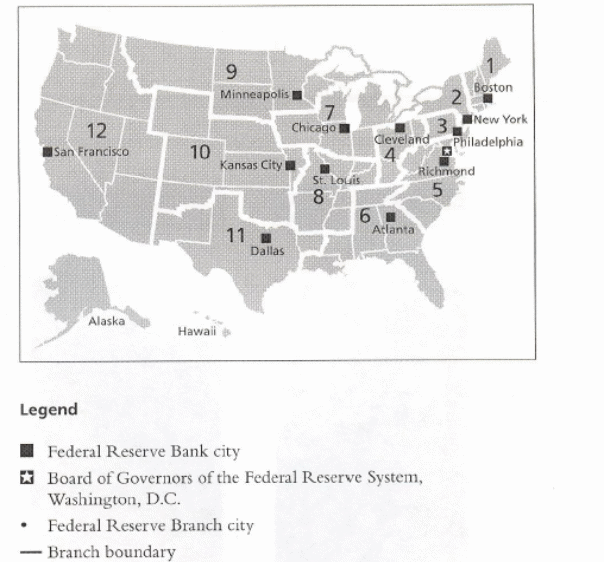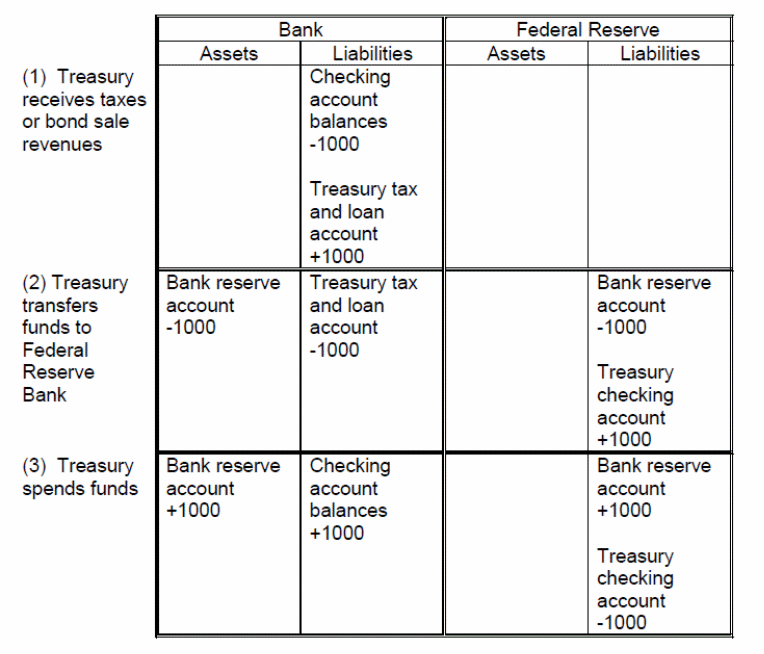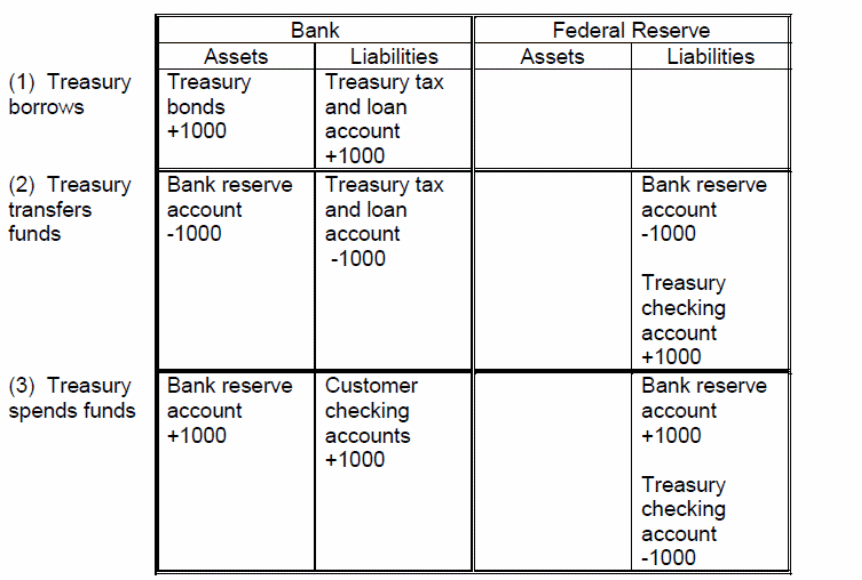Money as a medium of exchange
Money refers to anything that can be used as a medium of exchange. However, how money is defined and used by the non-economists varies significantly from the way it is perceived and used by economists. For instance, employees earn income which they commonly receive as money. In other words, money is used as the messenger that conveys income. It is important to regulate the money supply. If the money supply is high, economic agents will spend too much. When demand for goods/services exceeds supply, prices will increase leading to inflation. Conversely, if the money supply is low, supply will exceed the demand and result in deflation (decline in the average price levels), unemployment, and recession.
There are various types of money. In the US, these items include paper currency, coins, and checking account balances. Although checks are widely used to make payments, they do not qualify as money. The checking account balances are deemed as money. Additionally, credit cards are not considered as money since they merely substitute checks as an avenue of transmitting checking account balances.
A debit card serves the same purpose since it enables the cardholder to procure goods/services while payments for such commodities are automatically withdrawn from a checking account held by the card issuer. Later on, the card issuer reloads the account balance by billing the cardholder.
The U.S. money supply consists of coins and paper notes issued excluding amounts held in vaults of Federal Reserve Banks, banks as well as the Treasury. It also includes entire US dollar checking account balances in banks apart from those held by other foreign banks. The US money supply can be characterized by the equation: M=CC+CA, where CC stands for coins and currency constituents of the money supply (M) while CA symbolizes the checking account element. Since M is directly related to both CC and CA, a rise in either CC or CA increases M and vice versa.
The US money supply can be measured by establishing the quantity of money in circulation outside the Federal Reserve Banks and US Treasury and used by economic agents to conduct transactions. In other words, the money held by Federal Reserve Banks, banks, and the Treasury (i.e. coins, paper currency, and checking balances) is not included in the money supply since such funds cannot be accessed by economic agents for use.
If the cash held by the bank was included in the CC constituent of M, a cash deposit of, for instance, $100 would raise CA by $100 but leave CC unaffected. M would increase by $100 although nobody has any more money to use. Likewise, when $100 is withdrawn from a checking account, CA will decrease by $100 while CC will remain unaffected. M will decrease by $100 although nobody has any less money to use. Thus, M can be helpful if it increases only when economic agents can access more money for use and decline only when less money is available.
The velocity of money (V) is defined as the average number of times that a dollar is used to procure current domestic output (only) each year. Thus, the velocity of money is determined by all economic agents within the economy. The velocity of money increases when some economic agents spend money quickly. Conversely, the velocity of money decreases when some economic agents hold on to money for extended periods. For instance, over $14 trillion worth of goods and services are produced in the US economy using only $2 trillion of money. This means that the velocity of money is about 7.25. In other words, on average, every dollar is used once every 1.66 months for procurements from the current domestic output. However, informal observation implies that dollars are being used significantly faster than that. Two reasons can explain this apparent discrepancy.
First, the description of the velocity of money above acknowledges only procurements from the current domestic product. However, dollars are also spent on other purchases such as to gain savings media (i.e. bonds and stocks), imports, and land. Thus, it is appropriate to exclude these purchases when measuring V since the measurement aims only at the determinants of current domestic employment.
Second, a substantial portion of US dollars is circulating outside of the United States. This implies that, while the measured US money supply is about $2 trillion, the real quantity of money in circulation within the economy is about $1.35 trillion while the velocity could be as high as 11. Various reasons can explain why a huge amount of US dollars are circulating outside the United States. Dollarization is one of the reasons since some countries use the US dollar as their official currency.
Financial issues
The US Treasury handles the financial matters of the federal government. The Treasury uses tax (collected by its Internal Revenue Service) and borrowed funds (from bond sales) to pay for federal government expenditures. Also, the Treasury runs two agencies-the US Mint and the US Bureau of Engraving and Printing-that create coins and paper notes used in the country. The newly produced coins and currency notes are purchased by the 12 Federal Reserve Banks where there are hoarded until they are procured and used by the country’s banks for customer use. This entire process results in a modest increase in the money supply.
The Federal Reserve System (Fed) was created by Congress to stabilize and control the nation’s banking system. There are12 Federal Reserve Banks managed by the federal government (see appendix). The fed has several functions. For instance, it controls the amount of money supply in the country. It also functions as the US bankers for other foreign governments as well as global agencies including IMF and World Bank. The Federal Reserve Banks also function as bankers’ banks. Commercial banks hold reverse accounts within Federal Reserve Banks. When their amounts reduce, commercial banks withdraw from the reserve accounts to replenish their coins and paper currency. Conversely, when they accumulate surplus cash, they deposit them in their reserve accounts in the Federal Reserve Banks.
There is no clear distinction between the traditional commercial banks, credit unions, and savings associations following the introduction of reforms in the financial service sector by Congress in 1980. These institutions provide customers with transaction accounts on which checks can be used to make payments. One must acquire a charter before starting a bank. Bank chartering agencies are operated by the federal government and every state.
There are two conditions that an applicant must satisfy before he/she is granted a charter.
- The current banks in the area do not satisfy the financial needs of the population
- the applicant has adequate financial resources and knowledge to introduce and run a bank that will seal that service gap.
Although the banking industry is strictly controlled, banks operate for profits and are allowed to make their business decisions. However, the main goals for supervising and regulating the banking industry are
- consumer protection;
- stability of the monetary system;
- depositor protection;
- an efficient and competitive banking system.
These goals are discussed below.
Since bank customers are creditors, they are susceptible to default risk if the bank fails to meet their withdrawal needs. Since banks use most of the deposit balances to make loans, they usually do not have enough cash to meet the withdrawal needs of their customers. Thus, bank regulation and supervision aim to minimize the possibility of bank insolvency. Concerning monetary system stability, the main goal of supervising and regulating the banking sector is to prevent considerable disturbance to the smoothly functioning, accurate, and secure payment system. Commercial banks are assisted by the regulators to identify potential hitches and appropriate remedial measures to be adopted.
As noted above, one of the main goals for regulating banks is to ensure an efficient and competitive banking system. When the competition is healthy, bank customers can benefit from efficient operations as well as more attractive terms on deposits and loans. Since commercial banks compete with the non-bank seekers of loanable funds, bank regulators usually avoid imposing unnecessary restrictions on banks to enable them to compete efficiently with their outside rivals.
Under the consumer protection goal, the regulators here aim to safeguard the public from unethical banking practices. The regulators make it mandatory for banks to reveal the terms, conditions, and charges related to their services. Banks are required to be impartial when they offer these services notwithstanding race, gender, or religion. They are also required to observe confidentiality concerning the personal information of their customers.
The US financial industry is supervised and regulated by several Principal Regulators that coordinate their operations. The Principal Regulators have powers to revoke charters, suspend bank officials, and impose fines. For example, the Office of the Comptroller of the Currency (OCC) not only provides federal commercial bank charters but also functions as the supervisory agency. The Federal Reserve System (FRS) is responsible for supervising and regulating commercial banks as well as financial holding firms. The Federal Deposit Insurance Corporation (FDIC) is a federal agency tasked with supervising and regulating insured state-chartered banks that are not members of the FRS.
The Office of Thrift Supervision (OTS) is an agency embedded within the Treasury Department. OTS is tasked with chartering, supervising, and regulating federal and state-chartered savings associations. The National Credit Union Administration (NCUA) is tasked with regulating and supervising federal and state-chartered credit unions insured by the National Credit Union Share Insurance Fund.
Impact on credit markets and money supply
The Treasury tries to perform its operations with negligible impacts on the credit markets and money supply of the nation. In effect, the Treasury has developed tax and loan accounts in banks throughout the nation. These accounts are used in various ways. For example, when an individual submits his/her tax payments to the Internal Revenue Service (IRS), the agency deposits them into tax and loan account in the nearby selected banks.
When the Treasury plans to settle some of the government’s expenses, it transfers adequate funds from tax and loan accounts (from the area where the payment is to be executed) to its checking account in the Fed Reserve Bank located within that region. Consequently, a similar amount of reserves in the banks within that area is lost. However, this cutback is swiftly restored when the Treasury writes a check to pay the bills. The Treasury check is then deposited by the bank that receives it.
The bank tops up the customer’s checking account balance with the amount of the check and then asks the Federal Reserve Bank to reimburse the payment. The latter will then decrease the Treasury’s account balance by the amount of the check and raise the bank’s reserve account balance by the same figure. Consequently, the bank reserve as well as the region’s money supply will be reinstated to their initial levels.
The above process, as illustrated in table 1(see appendix), entails three phases. In phase 1, the Treasure obtains $1000 of tax revenues in the form of a check written upon an individual’s checking account balance. As a result, the individual’s checking account balance at the bank reduces by $1000 while the Treasury’s account balance at that bank increases by $1000. Phase 2 takes place when the Treasury transfers $1000 from its account to its checking account at the Federal Reserve Bank in the area. This transaction is executed by the Federal Reserve Bank which transfers $1000 from the bank’s reserve account (in the Federal Reserve Bank) to the Treasury account.
Consequently, the bank’s assets (its reserve account balance) reduce by $1000 while the Treasury’s account balance increases by the same amount. Phase 3 occurs when the Treasury issues a check to settle government bills. The check is then deposited in the bank by the individual who gets it. Consequently, the bank takes the check and increases the individual’s checking account balance by $1000. The bank then submits the check to the Federal Reserve Bank and claims compensation for granting $1000 to its customer. The Federal Reserve Bank then raises the reserve account balance of the bank by $1000.
The Fed government accepts substantial amounts of funds on tax-payment due dates as well as when the Treasury sells its securities. Later on, the Treasury expends these funds bit by bit in the subsequent months. Thus, if the Treasury fails to use tax and loan accounts to maintain its funds until they are exhausted, the nation’s financial system would experience a severe credit crunch. For instance, when the Treasury opts to sell new securities, banks throughout the nation will experience enormous losses of reserves and deposits since funds are transferred to the Federal Reserve Banks by the Treasury.
What’s more, banks would take more time to restore their deposit and reserve balances since the Treasury will outstretch the expenditure of its funds over many months. Therefore, tax and loan accounts are used by the Treasury to prevent a credit crunch.
The Treasury runs the US Mint and Bureau of Engraving and Printing (BEP) to produce coins and paper currency. The 12 Federal Reserve Banks then procure the newly minted coins and currency notes from the Treasury for storage. It is worthy to note that the newly minted coins and paper currency do not qualify as money since they are not in circulation. However, when new coins and currency notes are circulated in the economy, they do not raise money supply. For example, when banks replace spoilt coins and paper notes with new ones they receive from the Treasury, the Federal Reserve Banks obliterate the spoilt money.
Usually, the Treasury borrows funds via the public sale of its securities, and banks are allowed to bid for them. When the banks procure these securities, they pay for them with reserves. Table 2 explains this process. In phase 1, the bank procures $1000 of newly Treasury bonds. To pay for the bond, the bank adds $1000 to the Treasury’s tax and loan account. In phase 2, the Treasury transfers funds to its checking account before making a purchase. Also, the reserve account of the bank reduces by $1000. However, the money supply remains constant. In phase 3, the Treasury writers a $1000 check to settle the government bill.
The receiver of the $1000 check deposits it into a checking account. The bank reserves are then restored to its initial level when the Federal Reserve Bank reimburses the bank (for honoring the Treasury’s check) by transferring $1000 from the Treasury’s account to the reserve account of the bank. Thus, if the federal government bills are financed by a bank that procures newly issued Treasury bonds, the money supply will increase but the bank reserve will remain constant. However, when the Treasury financed government expenses by using borrowed public funds, both the money supply and bank reserves remain unchanged.
Appendix
The Federal Reserve System



